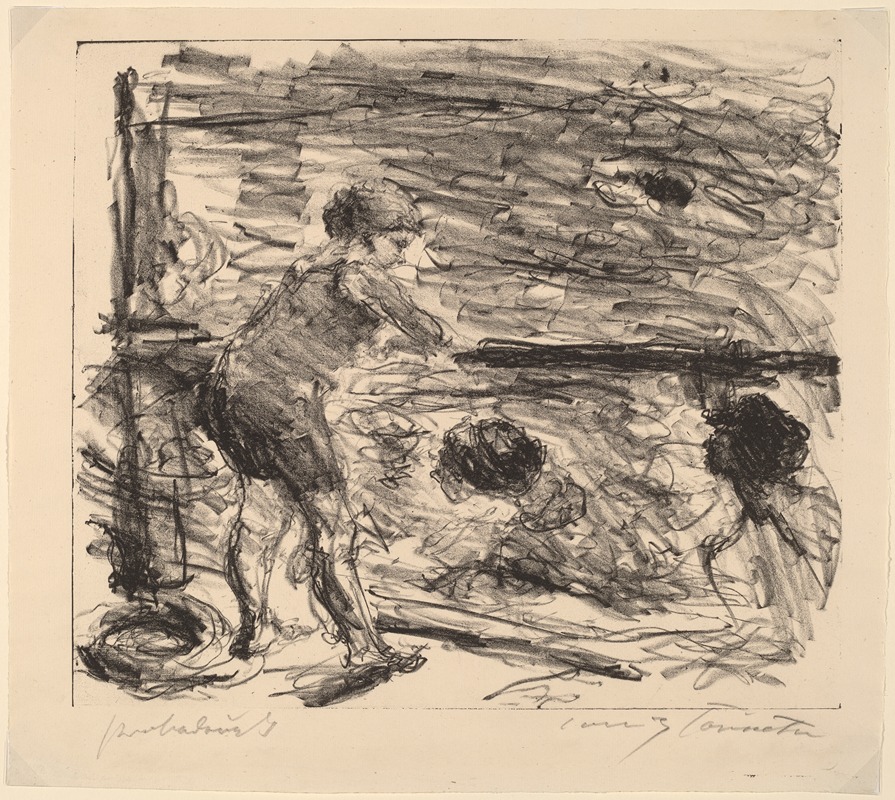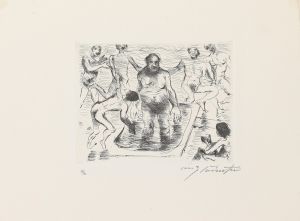
The Bath House
A hand-painted replica of Lovis Corinth’s masterpiece The Bath House, meticulously crafted by professional artists to capture the true essence of the original. Each piece is created with museum-quality canvas and rare mineral pigments, carefully painted by experienced artists with delicate brushstrokes and rich, layered colors to perfectly recreate the texture of the original artwork. Unlike machine-printed reproductions, this hand-painted version brings the painting to life, infused with the artist’s emotions and skill in every stroke. Whether for personal collection or home decoration, it instantly elevates the artistic atmosphere of any space.
Lovis Corinth's The Bath House is a notable painting created in 1908 by the German artist, who was a leading figure in the transition from Impressionism to Expressionism. The artwork is a vivid and dynamic depiction of a group of nude figures in a communal bathhouse setting, showcasing Corinth's masterful use of color, texture, and composition. The painting reflects Corinth's interest in the human form and his ability to capture movement and emotion with bold, expressive brushstrokes.
The scene in The Bath House is characterized by its energetic and somewhat chaotic atmosphere, with figures interacting in various poses and gestures. Corinth's use of light and shadow adds depth and dimension to the composition, while his loose, painterly technique conveys a sense of immediacy and vitality. The painting exemplifies Corinth's mature style, which often combined elements of realism with more expressive and experimental approaches.
Lovis Corinth was known for his ability to depict the human body with both technical skill and emotional resonance. In The Bath House, he explores themes of physicality, intimacy, and the communal aspects of bathing culture, which was a common subject in European art at the time. The painting also reflects the influence of classical traditions, as well as the modernist tendencies that were emerging in the early 20th century.
Corinth's career was marked by a significant shift in style following a stroke in 1911, which affected his ability to paint with precision. However, The Bath House predates this event and represents a period when Corinth was at the height of his technical abilities. The painting is often celebrated for its dynamic composition and the way it captures the vitality of the human figure.
Today, The Bath House is regarded as an important work in Corinth's oeuvre and a significant example of early 20th-century German art. It is housed in the Städtische Galerie im Lenbachhaus in Munich, Germany, where it remains a key piece in the museum's collection. The painting continues to be studied and appreciated for its artistic and historical significance.


















